do i know how to art? no. is that going to stop me? also no. main: wellarentyoujustarayofpitchblack personal: ladminramblin
Last active 4 hours ago
Don't wanna be here? Send us removal request.
Text
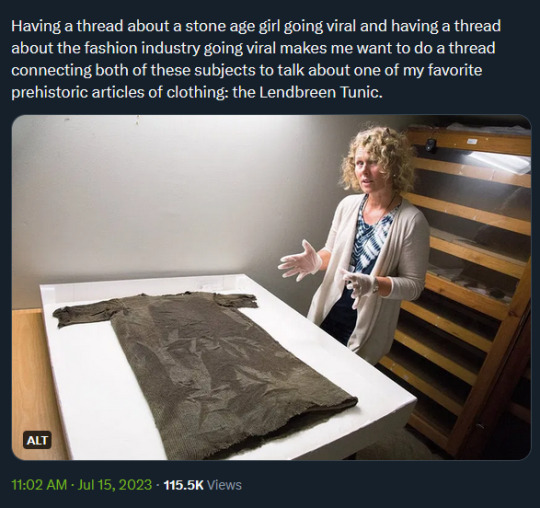
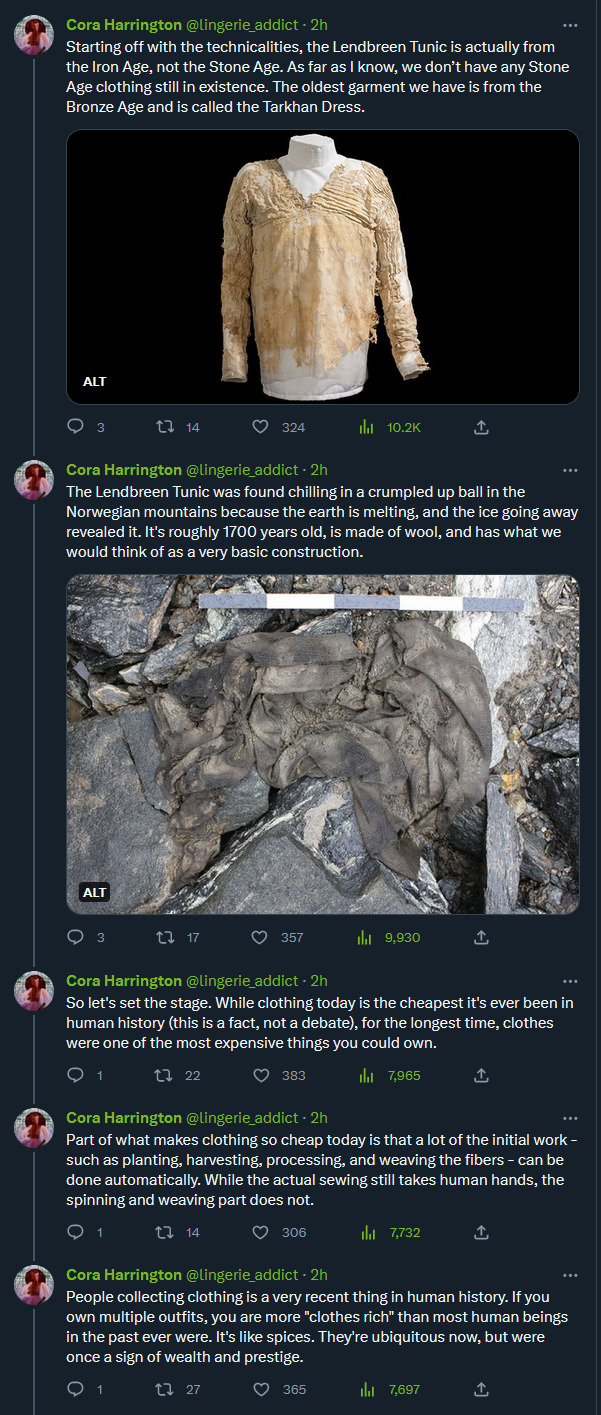
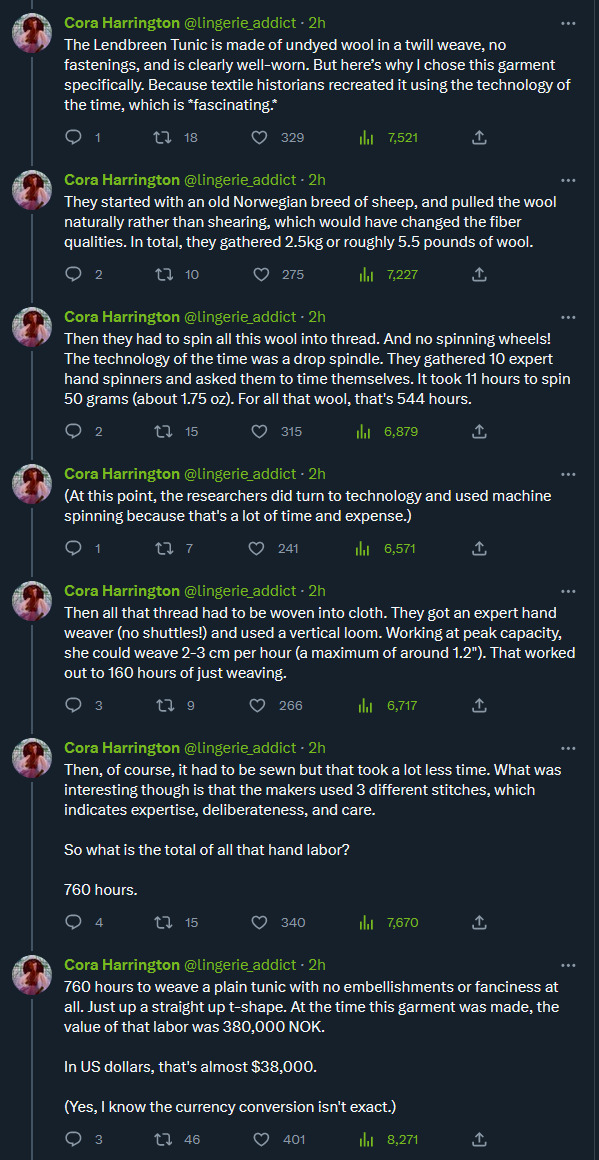

@lingerie_addict has a really cool thread on ancient fashion over on twitter.
Those source links are here
cambridge.org
Youtube
ucl.ac.uk
36K notes
·
View notes
Text
my favorite clip studio assets!
since i’ve been using csp a lot more now i thought i’d make a post of the assets i use the most for ppl looking for good stuff!
general brushes: Pen + Caspar Pen (かしペン+カスレかしペン) (my fav pen for sure) Erase Along Edge (YOU NEEED THIS ERASER YOU NEED IT!!!) Freehand Style Brush Set (フリーハンド風ブラシセット) (cant recommend this one highly enough, i use it for all my backgrounds) Bong pen OBONGBONG’S PEN Halftones (スルスル塗れる5線刻みトーンブラシ) A non-shin pen (しんでないペン) SU-Cream Pencil Noisy Ink Brush v2 Simple Retro Halftone Brushes Smeared Paintbrush (べっとり絵筆) A breather pen (一息ペン) Aj’s Pencil Set Watercolor set (수채화 세트) T-marker Wind Brush Set (Tマーカー風ブラシセット) Watercolor marker ▲ ■ and texture set (水彩マーカー●▲■とテクスチャーセット)
special effect and decorative brushes: Tights Pen (タイツペン) Glitch Brushes 2 (彩塵ブラシ(Prism Dust) Hand-painted effect set No. 2 (手描き効果セットNo.2) Oriental Emblem 11-20 (동양 문양 11-20) (this creator has so many amazing assets ive downloaded them all) Ribon brushes (りぼんブラシ) Lace Set レース セット Ornate lace Bramble (rose-玫瑰叢) Loose hand-painted sprinkle brush (ゆるゆる手描きのふりかけブラシ) Bush pen (수풀 펜) Fantasy Papers Pearl Brush (真珠ブラシ)
gradient maps: Gradient map set for hologram (홀로그램�� 그라데이션 맵 세트) Yunywave★ Gradient Set cb gradients 3 ONG SET
3D: The Only Perspective Grid You Need! 3d sketch head Movable horse 1.8 A (可動のお馬 1.8a) Sitting poses collection (便利かもしれない座りポーズ集)
misc: Raiku RGB Shift Hand-drawn Rags tool Set (手描きのボロ線ツールセット) VHS action set
39K notes
·
View notes
Text
hi everyone!! my wrist is too sore to draw today, so instead i thought i'd share some of my favorite csp assets + how i like to use them! i also linked some procreate brushes at the end of the post!!
lineart brushes:
SU-Cream Pencil: i swear by this brush and i use it very often!! if you lower the pen density and use a gradient map over it when coloring your drawing, it has a nice effect. that's what i did in this drawing here! i also use this brush like i would draw on paper, so as a sketching tool. recently i've been enjoying blending it for shading. the pics below are drawn on one layer; left is more manga style while the one on the right is from a WIP of my singer sargent study, so it can be used for more realistic styles pretty well!


Found Pencil: another pencil brush that feels really nice to use, created by @/pigpenandpaper.
PS style brushes: a recreation of photoshop's (i believe) default brush. very versatile and also blends well!
analog wind variant pen: a nice pen that i like to use for lineart that is intended to have a bit of a sketch look.
zakutoro real g-pen: i used it for the lineart of this piece. although, it was drawn before i started using 600dpi in my works, so the lower resolution might make it look a bit unclear.
sets of rough pens: great for manga lineart with a rougher vibe; some of them have varying line weight.
coloring brushes:
zaku brushes: very nice and painterly mixing! i definitely recommend it for those who like to leave their colors a bit unblended.
softie marker: as the name implies, it's very soft! i like to use it for blush in chibi illustrations.
analog watercolor brushes: realistic-looking watercolor brushes. i recommend using it with csp's default paper textures, or those i linked below!
993 coloring pen: it's very soft and watery, though it can be made more solid by adjusting the paint density. i actually think it works very nicely for lineart too.
rock dog pen: another soft marker brush i like, that i once again also use for lineart and doodles.
thick coating brush set: recommended for paintings that show brush strokes.
cartoon cloud: don't let the name narrow your vision!! this has to be one of the BEST brushes for painting in my opinion, and of course it's great for clouds and explosions but so so much more!! and it's FREE try it try it!!
decoration/miscellaneous brushes:
neon pen
paper textures
symmetry move brush
close and fill without gaps
rope brush
sphere fisheye guide
flash balloon
speech bubble set: a lifesaving collection for comic artists!! dimensions and line weight can be adjusted by using the operation tool.
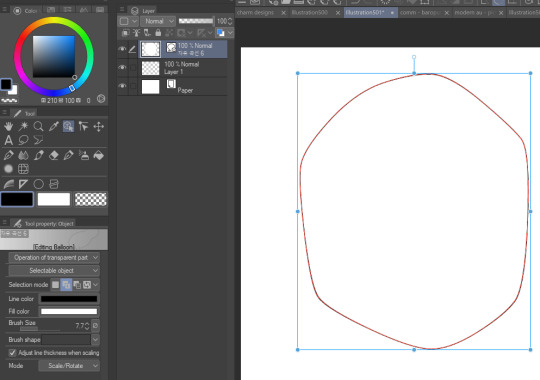
gradient map to use in color mode at 15% and another gradient map to use at 20%: the percentage refers to the opacity of the gradient map layer, but they are just the creator's recommendation and i tend to actually increase it. to use gradient map efficiently, i recommend putting all your colors (and lineart if you want) in a folder. then, right-click the folder, select "new correction layer" and then "gradient map". this allows you to modify the gradient map without worrying about affecting the original colors in case you decide not to use it in the end. to import a gradient map from your downloaded csp assets, click the wrench icon next to the name of the gradient set that's currently in use, then select "add gradient set".


you'll also notice that the creator recommends to use their gradients in "color mode". of course, this is also only a recommendation and i suggest trying as many layer modes as you like! to change a layer's mode, simply highlight the layer and click on "normal" (the default mode) and csp will display the available modes.

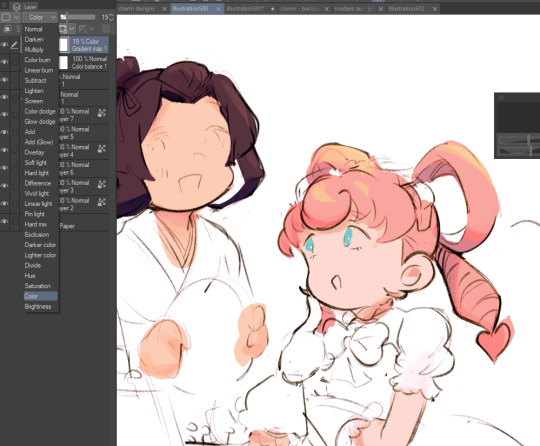
fruit ninja gradient map: fun to use if you want really drastic/vibrant colors! the names of the gradients are cute too, as you can see in the above screenshot!
BONUS: jeremy fenske's free photoshop brush pack: these aren't csp brushes per se, but they can be imported into the program! excellent for environments, i recommend watching fenske's video on how he uses the brushes to get a clearer picture since there are so many in this pack!!
BONUS 2: my good friend clem has a few brush packs for procreate that are ideal for painting,decorating drawings, and y2k-inspired illustrations, i definitely recommending checking out her shop!
in conclusion i hope this post can be helpful to you!! i tried to explain how to use the brushes as best as i could, but feel free to let me know if anything is unclear!! i hope you will enjoy using them! :D
186 notes
·
View notes
Text
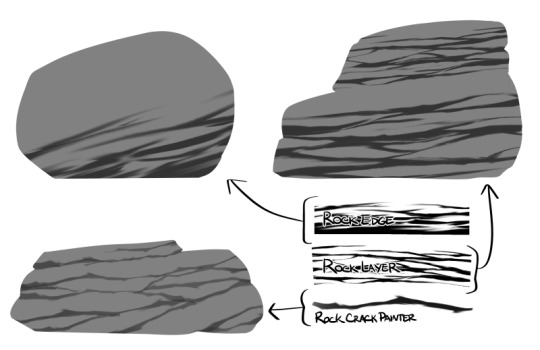

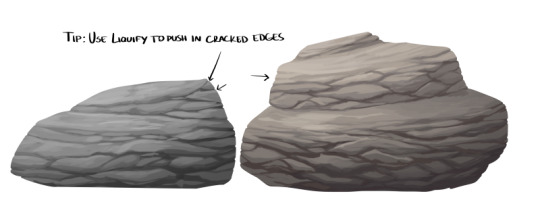
Heyo, I made an experimental little set of quick rock texturing brushes for bg paintings for CSP (unfortunately these wont work in software like Krita, Photoshop, or Procreate bc they use ribbon brushes), but they are Free and you can go get em if you want! https://assets.clip-studio.com/en-us/detail?id=2031536
Credit not necessary at all, but if you do use them feel free to tag me if you want to!
387 notes
·
View notes
Note
staring so kindly at your sluglang post,, as someone working on a language as well this looks fantastic (and is also. super organized compared to mine BHAHAH) Any tips for putting together a language? Like resources on how to go about it, or notes? /genq
You are staring kindly... (thank you)
As for tips... Wikipedia is actually one of my biggest, most useful tools, because I love to read articles about grammatical concepts, and they will usually have a varaiety of examples of use if you can figure out how to parse the academic language. There are some core ideas that pop up all over the place crosslinguistically, like case marking or converbs, and you can get a lot from learning how other languages might parse the same idea, both how they handle the idea grammatically and what kind of metaphorical language might be involved; like how in Scottish Gaelic, to say you have something, you say it's 'at' you, or how it doesn't have an exact equivalent of English's infinitive, or how Mongolian has so many word endings that convey meaning, and a bunch of them are literally endings stacked on top of other endings.
There's also really good conlang youtubers, like David Peterson, the one who made Dothraki and other pop media conlangs, Artifexian, Biblaridion. They have videos on both interesting grammatical concepts that don't exist in english AND how to integrate them into conlangs. Davide Peterson especially has interesting videos on things like sound changes, vowel harmony, phonological concepts that can really help shape your language and bring a degree of naturalism if that's what you're looking for.
Etymology can be extremely informative though, and really help you to understand exactly how creative people have gotten with language over the past thousands of years. Etymonline is a great website for that. Did you know that the word "next" was originally literally "nearest"? Or that that the suffix "be-" was originally "by", so words like "before" actually meant "by the fore", and very often these meanings are metaphorically extended to the way we use them today. It's great for helping to develop very important words that can be structural to your language, so that you're not just trying to raw make up a new word with no basis every time.
Aside from that, there's no single source I go to for making conlangs. Everything is on a case by case basis. Something that has been really helpful for me is constantly writing example sentences and finding things to write about, because similar to translating existing texts, it forces me to reckon with the way my conlang works, figure out how to convey certain ideas (or whether or not the language can convey the idea at all).
Usually I'll have a few languages that I keep in mind for inspiration for any given project and if I'm stumped or need an idea, I'll actually look up learning resources for those languages. My slugcat language has had me looking up a lot of "How to say..." in Korean, Arabic, Japanese Filipino, a little bit of Indonesian? Some Russian for verb stuff. Once I find resources, I spend a bit of time dissecting how it works in those languages and figure out how that can fit in the existing framework of my own project, or if it's something I'd even want in the project at all.
Once I have an idea, I'll just start iterating on it, usually on paper, basically brainstorming how the sentence structure and sounds might work until I find something that is both sonically satisfying and logically sound within the existing framework. If I'm feeling extra spicy, I might try to consider how the culture and priorities of the speakers might shape the development of the language. The important thing while doing this is, just like brainstorming, to be unafraid to keep throwing ideas onto the page no matter how unviable or nonsensical it may seem in your head. You NEED to experiment and find what doesn't work or else your brain will be too clogged to find out what does. Exercising your pen will help you get into the mindset of someone using the language (because you are), it'll help you form connections to other parts of the language you've already developed, and once you've developed enough, the language will almost start writing itself.
I've actually had some really interesting interactions happen my scuglang between the archaic system of suffixes, the position word system, and the triconsonantal root system, which actually gave rise to an entire system of metaphorical extension, letting speakers use phrases like "at a crossing of" or "at a leaving of" to mean across or away and also talk about concurrent events like "He talked while eating noodles" (He, at an eating of noodles, talked).
Anyway, I know I got kind of scattered but these are some of the big parts of how I approach conlanging! If I have questions or needs, I look to other languages, find learning resources, apply it, and then ask more questions. Spend time with your language and get familiar with it. There's the time I read "Ergativity" by Robert Dixon, but reading literal textbooks is not a requirement for conlanging. You just need to chip away at it and keep asking question.
Here's some photos of my own conlanging notes so you can see how serious I am when I say iterating and brainstorming are extremely helpful. You need to be throwing shit on the paper. I will handwrite three pages just to contradict myself on the next because those three pages were important for forming the final idea.



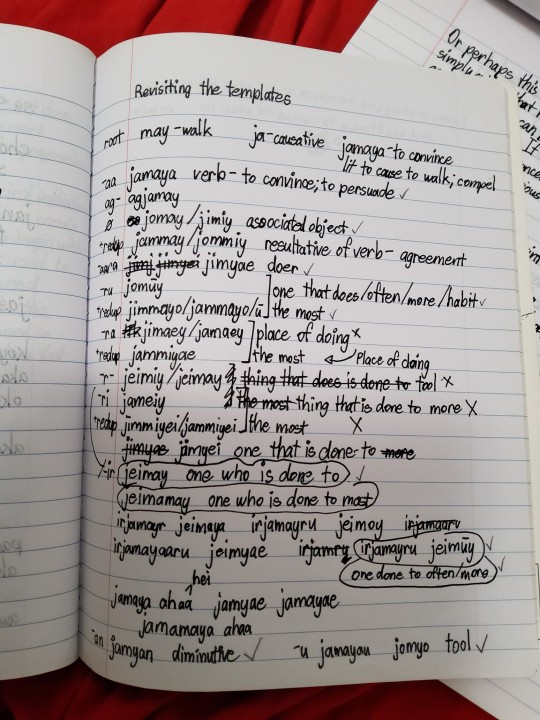




68 notes
·
View notes
Text
Hey, don’t cry. Free online database of Japanese folk lore
87K notes
·
View notes
Text
So! In looking for more resources on Black hair, I found this amazing, simplified explanation for afros, locs, braids, and twists!! Everyone thank "Daisy E" for their contribution to diversity and inclusion within the art space!
It's far past time to draw our Black characters with our hairstyles and natural hair textures. Please take the time to look, and practice!
6K notes
·
View notes
Text
a list of 100+ buildings to put in your fantasy town
academy
adventurer's guild
alchemist
apiary
apothecary
aquarium
armory
art gallery
bakery
bank
barber
barracks
bathhouse
blacksmith
boathouse
book store
bookbinder
botanical garden
brothel
butcher
carpenter
cartographer
casino
castle
cobbler
coffee shop
council chamber
court house
crypt for the noble family
dentist
distillery
docks
dovecot
dyer
embassy
farmer's market
fighting pit
fishmonger
fortune teller
gallows
gatehouse
general store
graveyard
greenhouses
guard post
guildhall
gymnasium
haberdashery
haunted house
hedge maze
herbalist
hospice
hospital
house for sale
inn
jail
jeweller
kindergarten
leatherworker
library
locksmith
mail courier
manor house
market
mayor's house
monastery
morgue
museum
music shop
observatory
orchard
orphanage
outhouse
paper maker
pawnshop
pet shop
potion shop
potter
printmaker
quest board
residence
restricted zone
sawmill
school
scribe
sewer entrance
sheriff's office
shrine
silversmith
spa
speakeasy
spice merchant
sports stadium
stables
street market
tailor
tannery
tavern
tax collector
tea house
temple
textile shop
theatre
thieves guild
thrift store
tinker's workshop
town crier post
town square
townhall
toy store
trinket shop
warehouse
watchtower
water mill
weaver
well
windmill
wishing well
wizard tower
114K notes
·
View notes
Text
Character Development Questions: Hard Mode
Does your character have siblings or family members in their age group? Which one are they closest with?
What is/was your character’s relationship with their mother like?
What is/was your character’s relationship with their father like?
Has your character ever witnessed something that fundamentally changed them? If so, does anyone else know?
On an average day, what can be found in your character’s pockets?
Does your character have recurring themes in their dreams?
Does your character have recurring themes in their nightmares?
Has your character ever fired a gun? If so, what was their first target?
Is your character’s current socioeconomic status different than it was when they were growing up?
Does your character feel more comfortable with more clothing, or with less clothing?
In what situation was your character the most afraid they’ve ever been?
In what situation was your character the most calm they’ve ever been?
Is your character bothered by the sight of blood? If so, in what way?
Does your character remember names or faces easier?
Is your character preoccupied with money or material possession? Why or why not?
Which does your character idealize most: happiness or success?
What was your character’s favorite toy as a child?
Is your character more likely to admire wisdom, or ambition in others?
What is your character’s biggest relationship flaw? Has this flaw destroyed relationships for them before?
In what ways does your character compare themselves to others? Do they do this for the sake of self-validation, or self-criticism?
If something tragic or negative happens to your character, do they believe they may have caused or deserved it, or are they quick to blame others?
What does your character like in other people?
What does your character dislike in other people?
How quick is your character to trust someone else?
How quick is your character to suspect someone else? Does this change if they are close with that person?
How does your character behave around children?
How does your character normally deal with confrontation?
How quick or slow is your character to resort to physical violence in a confrontation?
What did your character dream of being or doing as a child? Did that dream come true?
What does your character find repulsive or disgusting?
Describe a scenario in which your character feels most comfortable.
Describe a scenario in which your character feels most uncomfortable.
In the face of criticism, is your character defensive, self-deprecating, or willing to improve?
Is your character more likely to keep trying a solution/method that didn’t work the first time, or immediately move on to a different solution/method?
How does your character behave around people they like?
How does your character behave around people they dislike?
Is your character more concerned with defending their honor, or protecting their status?
Is your character more likely to remove a problem/threat, or remove themselves from a problem/threat?
Has your character ever been bitten by an animal? How were they affected (or unaffected)?
How does your character treat people in service jobs?
Does your character feel that they deserve to have what they want, whether it be material or abstract, or do they feel they must earn it first?
Has your character ever had a parental figure who was not related to them?
Has your character ever had a dependent figure who was not related to them?
How easy or difficult is it for your character to say “I love you?” Can they say it without meaning it?
What does your character believe will happen to them after they die? Does this belief scare them?
133K notes
·
View notes
Text
i hate that every time i look for color studies and tips to improve my art and make it more dynamic and interesting all that comes up are rudimentary explanations of the color wheel that explain it to me like im in 1st grade and just now discovering my primary colors
152K notes
·
View notes
Text
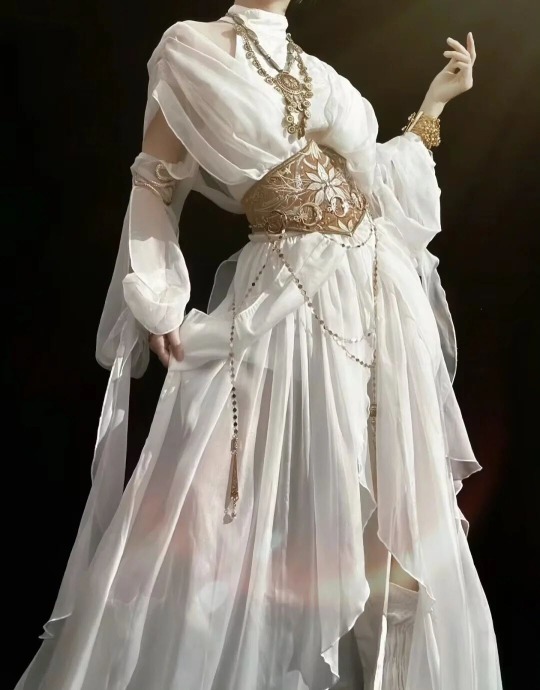
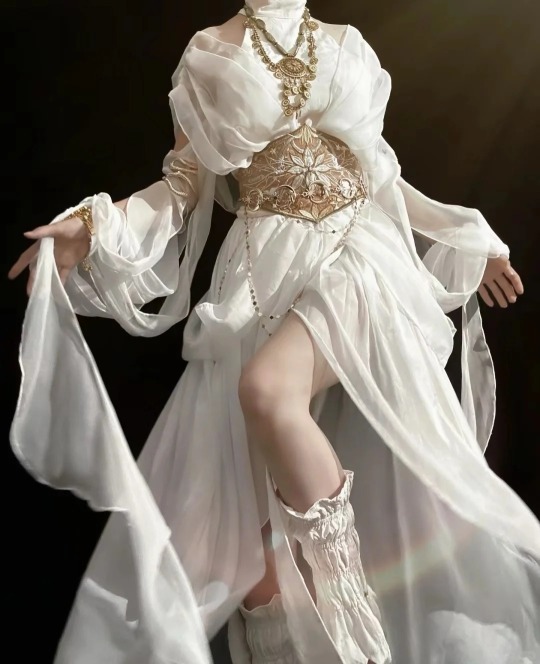
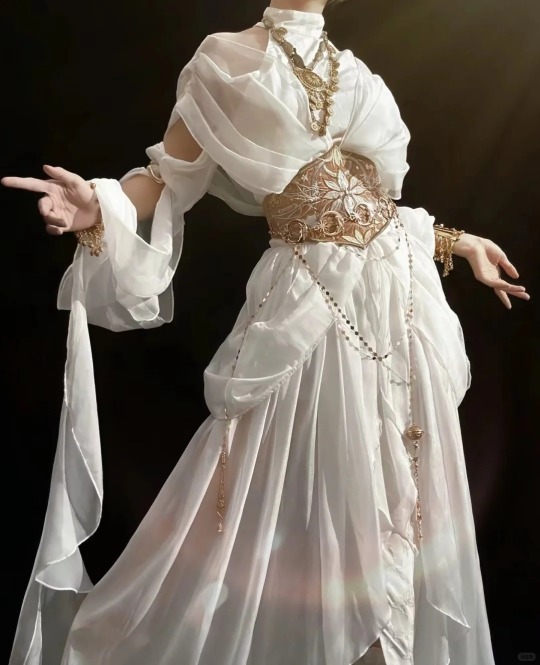
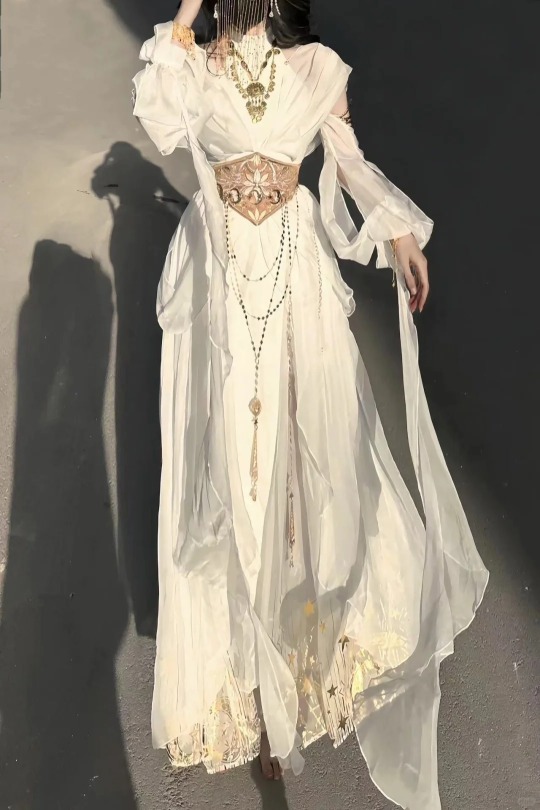
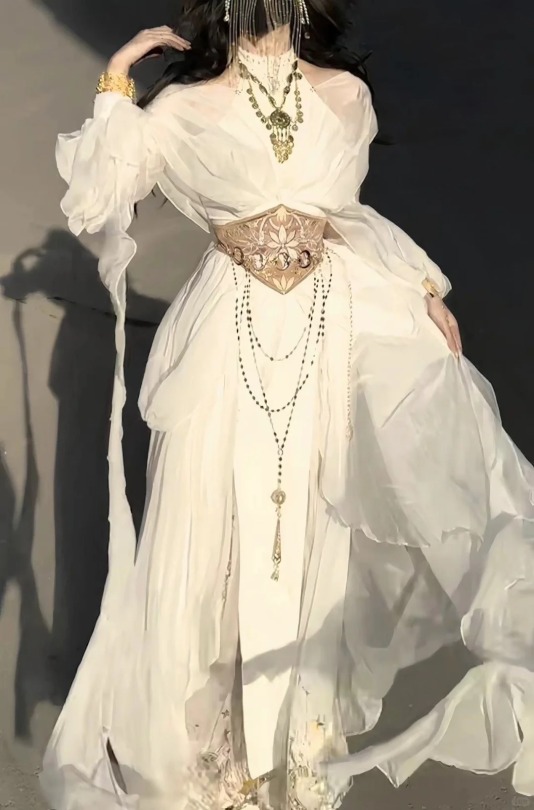
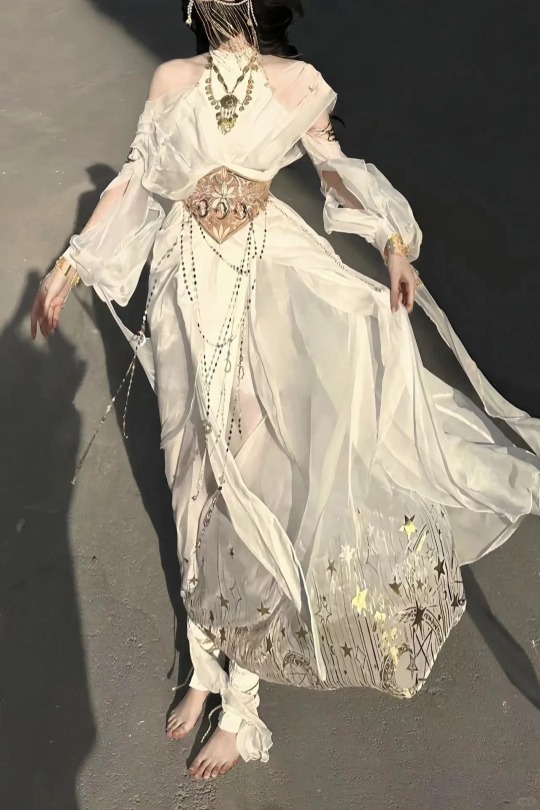
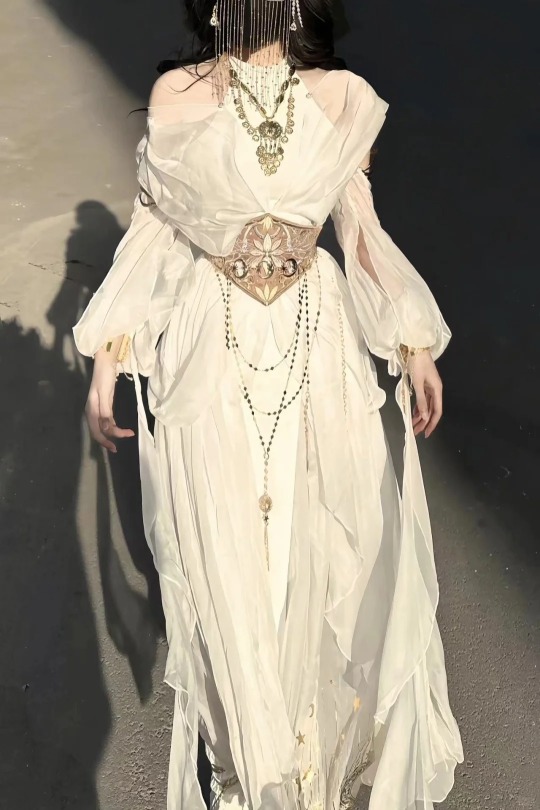
Preorder Deadline Reminder: 【-The Celestial Bride-】 Lolita Top Wear and Matching Dresses Set
◆ Don't Miss Them >>> https://lolitawardrobe.com/the-celestial-bride-vintage-classic-lolita-top-wear-and-matching-dresses-set_p8096.html ◆ The Preorder Will Be Closed After May 5th, 2024!!!
2K notes
·
View notes
Note
Hey, I love the comic! I love how the storywriting stays true to the original series but also adds its own fun spin on it! You've actually inspired me to write my own Blue diamond AU, lol.
Anyways I have a question for making comics just in general. How can you make dynamic compositions in such a small space. I honestly love how intricate all of your panels fade into one another!
So, if you're okay with it, I was wondering if you could give me some tips on how that would work?
Anyway, I love the comic and stay awesome!
:D
Your own comic - that's awesome to hear! It's always exciting to start something like that. I wish you the best of luck in your goals!
As for the paneling - honestly, the first step is to stop thinking of it as a 'small space'! The truth is, even on a small mobile screen, we can fit a lot of detail. And as long as we know how to use the space wisely, it's not ever going to feel small.
Ironically, cramming MORE into a panel makes it feel smaller.
Drawing less on a panel makes it feel larger. Weird, isn't it?
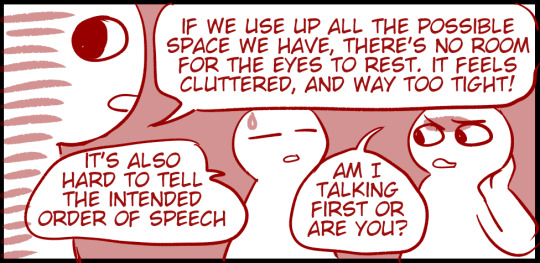
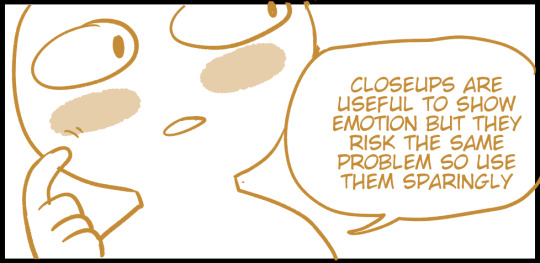

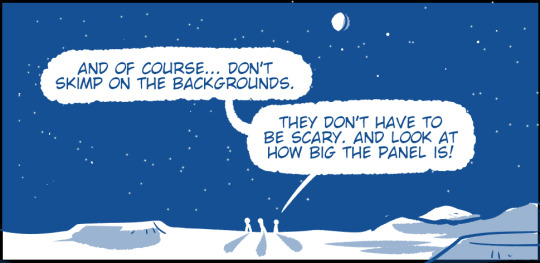
My more general advice is... STUDY MOVIES!
Don't just WATCH movies. But study them. Movies are like comics for dummies because there's only one size and shape of a panel and all the characters do the hard work of acting for you. (It's a joke, don't kill me.)
Anyway, the paneling in movies is versatile and interesting BECAUSE they're putting that single wide panel to the best use. If you already drew some comics, compare them to a movie screenshot and see what's different! Then, ask yourself why a certain angle, or a certain cropping of an image works better.
You'll find that there's some awesome ways to cram fun details into even the smallest corner of a panel. :)
There's also some awesome art resources by more talented comic artists than me out there. I'm sure others will link them in the comments, but for now, here's one I found:
388 notes
·
View notes
Text
I stumbled upon a website that allows you to blend any colors evenly no matter how opposite on the spectrum they are.
sharing the knowledge
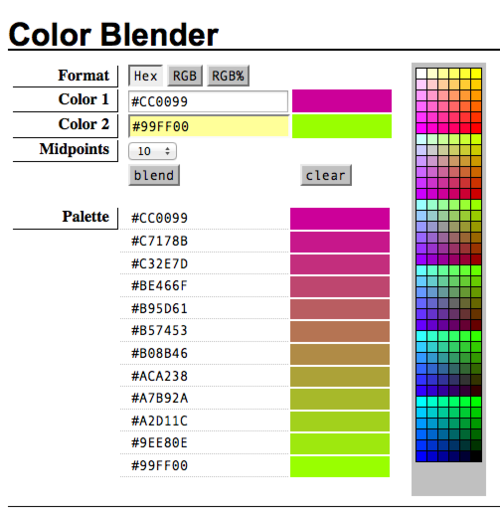
very helpful art resource
448K notes
·
View notes
Text

Part 1 of big "how to chibi-fy this flower????" guide is here!!! 🥰

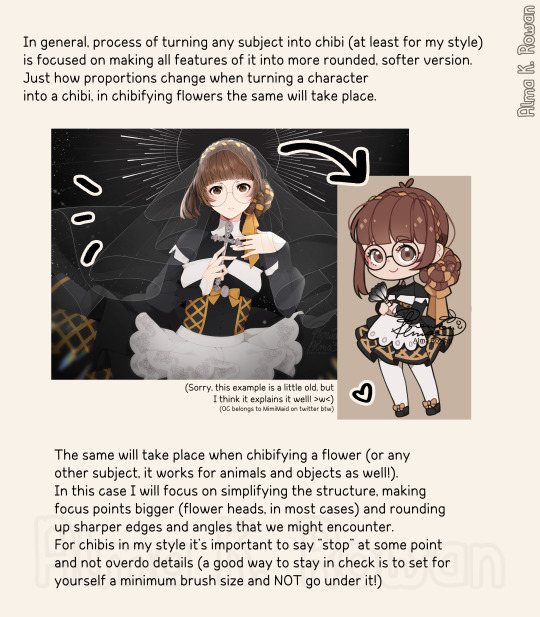


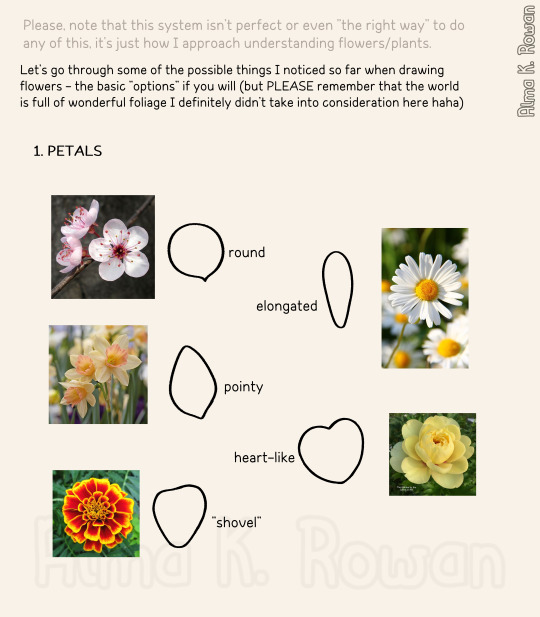

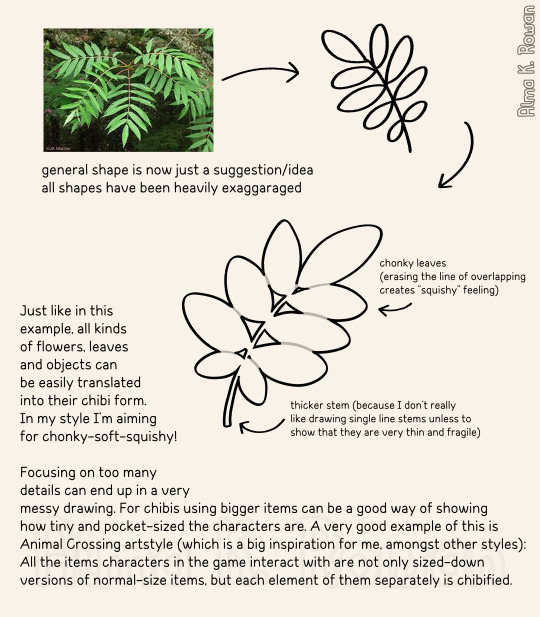




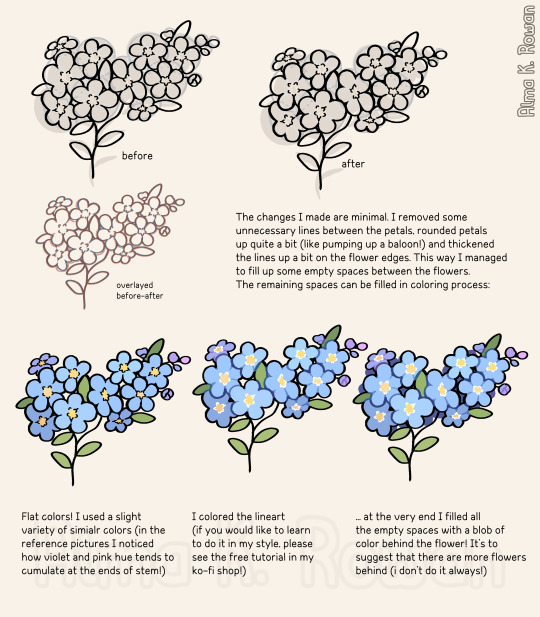
14K notes
·
View notes
Text
hot artists don't gatekeep
I've been resource gathering for YEARS so now I am going to share my dragons hoard
Floorplanner. Design and furnish a house for you to use for having a consistent background in your comic or anything! Free, you need an account, easy to use, and you can save multiple houses.
Comparing Heights. Input the heights of characters to see what the different is between them. Great for keeping consistency. Free.
Magma. Draw online with friends in real time. Great for practice or hanging out. Free, paid plan available, account preferred.
Smithsonian Open Access. Loads of free images. Free.
SketchDaily. Lots of pose references, massive library, is set on a timer so you can practice quick figure drawing. Free.
SculptGL. A sculpting tool which I am yet to master, but you should be able to make whatever 3d object you like with it. free.
Pexels. Free stock images. And the search engine is actually pretty good at pulling up what you want.
Figurosity. Great pose references, diverse body types, lots of "how to draw" videos directly on the site, the models are 3d and you can rotate the angle, but you can't make custom poses or edit body proportions. Free, account option, paid plans available.
Line of Action. More drawing references, this one also has a focus on expressions, hands/feet, animals, landscapes. Free.
Animal Photo. You pose a 3d skull model and select an animal species, and they give you a bunch of photo references for that animal at that angle. Super handy. Free.
Height Weight Chart. You ever see an OC listed as having a certain weight but then they look Wildly different than the number suggests? Well here's a site to avoid that! It shows real people at different weights and heights to give you a better idea of what these abstract numbers all look like. Free to use.
330K notes
·
View notes
Note
your shading is AMAZING specially when its conveying organic forms..... do you have any tips for people who dont know wrf going on (with shading)
ok so HI. hi. my old tutorial pisses me off so i will make a new one
i made a guy whose sole purpose is to be shaded so dont worry he likes it. and his name. his name will be mr. Boob. mr boob does not have to be blue
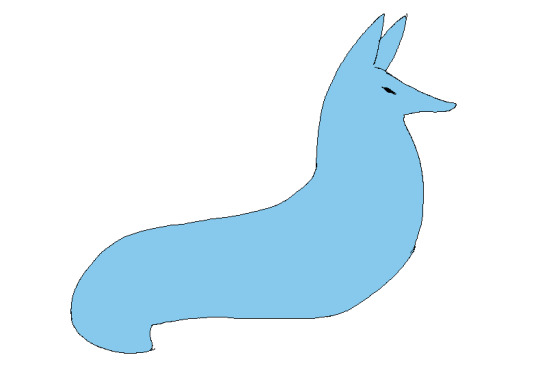
theres probably way better explanations of how to do it but unfortunately trying to "emulate" shading does ask you to somewhat understand ur character in a 3d way. like what would the 2d shape be if you "sliced" it? mr boob is made of so many circles. his tail also does a kind of weird perspective foreshortening thing because its pointing at you. is this being conveyed
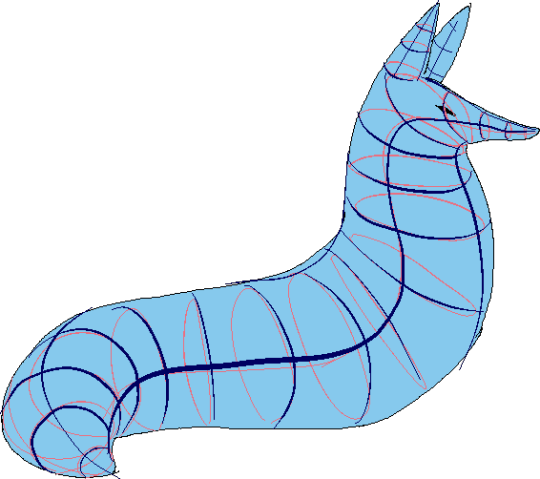
you obviuously dont have to draw a horrendous grid on your characters skin to do this . BUT it helps you put down (or at least envision) the lines of the form shading :
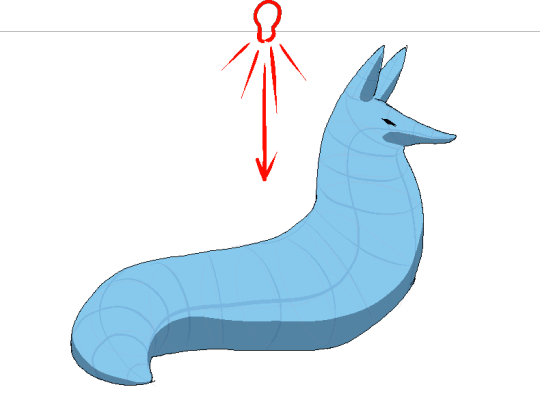
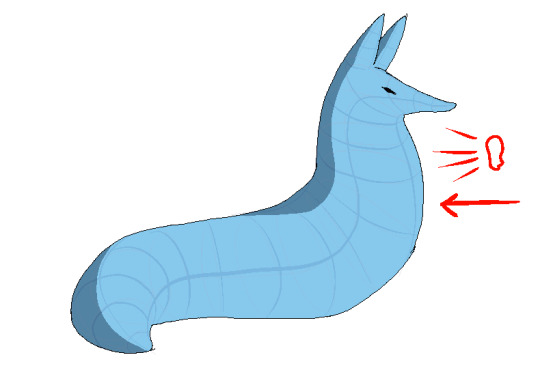
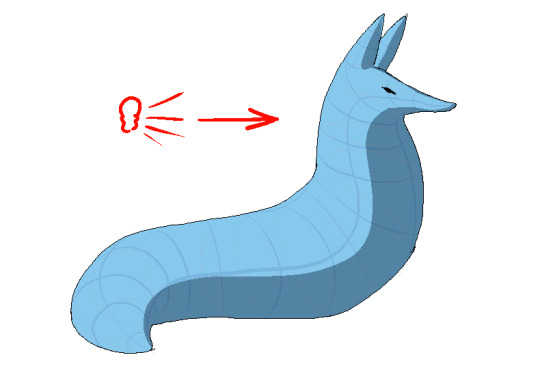
dont worry about cast shadows or the shading color because this is FORM SHADOW time only. think about what surfaces of the character are obviously facing away from the light source and put down the "separation line" of the shading based on that. thr most important thing is that youre trying to separate light from dark
im going to pick the first one for cast shadows bc it will be the most obvious to me
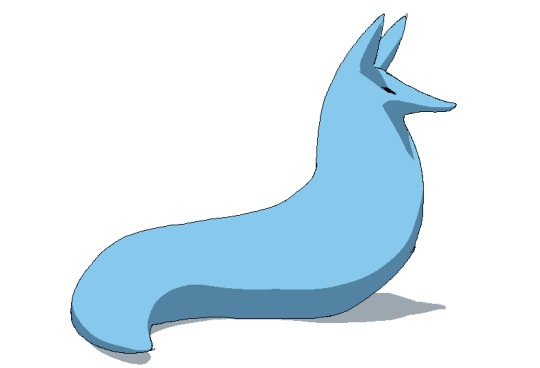
ok so. his ears and snout are blocking other surfaces of his body from the light, which means a shadow is cast!!!! bam. i saw someone describe cast shadows as what the light's pov "can't see." his entire body is putting down a cast shadow on the ground too
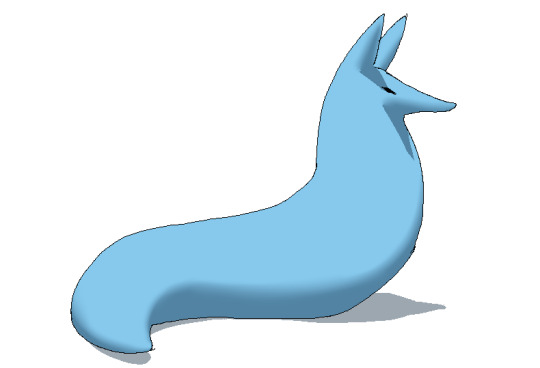
im impatient so i blended the form shadows now. its usually the easiest to just NOT blend cast shadows as a way of conveying that they are still cast shadows. but you can still blend them if you want to show "distance" between the obstruction and the surface its blocking. but its just a way of saying form and cast shadows should not be treated the same even if their softness coincides
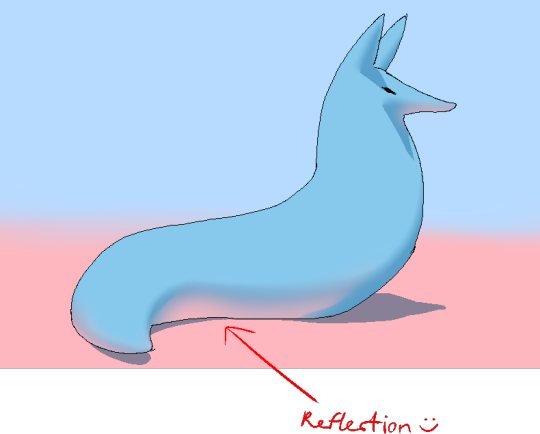
im going to lump reflection and ambient light together because theyre like. similar. reflections dont just happen in mirrors
since the sky is blue, making the ambient lighting, i tinged mr. boobs existing shadow to be a bit blue. (*this is kind of important because it can help you decide a shading color, which should USUALLY be based on the environment) (unless your character is just in the transparent void then it doesnt matter)
since the ground is pink, i made pink light bounce off of him. pointed and labelled. i dont rlly know how to go more in depth than that

contact shadows are literally shadows formed from direct-touching contact. very little light can reach in there, even from how reflections disperse, which means youre free to use the darkest color available (black). in this case mr. boob is making contact with the floor. because he is sitting on the floor.
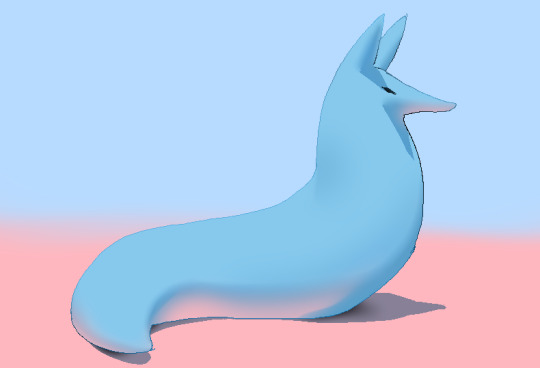
i touched him up a bit and wow!!!!!!!!!! look at mr. boob!!! he is so beautifully sculpted.
and one more thing
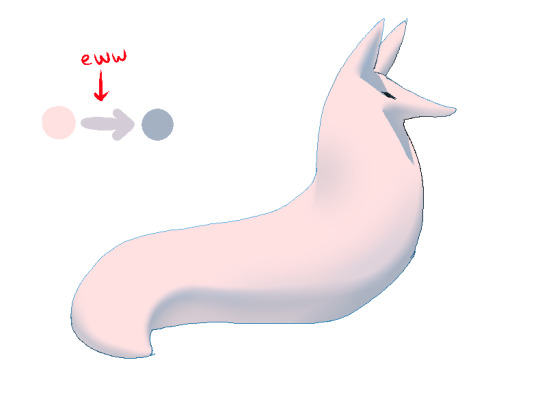
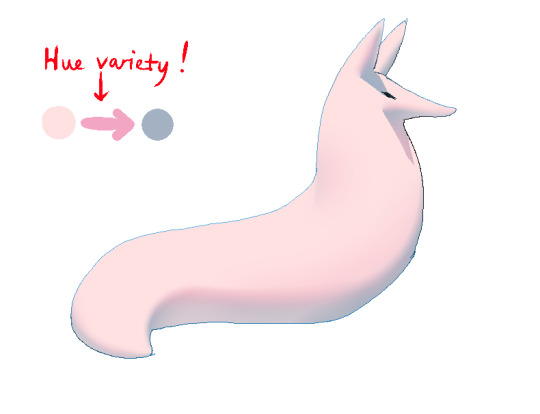
thats right. i made mr boob PINK. hes fucking ruined now. just kidding i would never say that to him
what im trying to convey here (its the easiest with really light colors) is a transitional color. this can also show subsurface scattering depending on how you use it which is fun to look at. the mistake i made on my last tutorial was "Just pick a warm saturated color!" which is really wrong in examples like Blue mr boob. because it would be weird to use a warm color to transition from blue to blue.
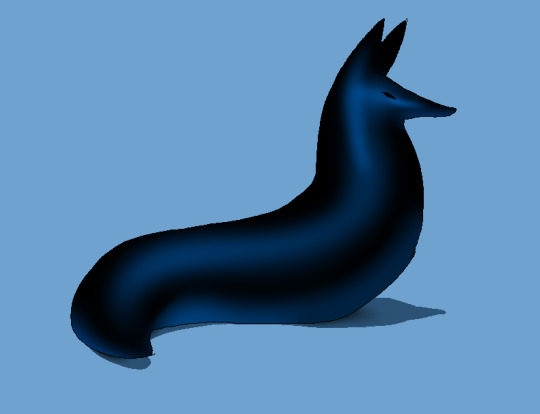
if you have a character that isn't bright enough then obviously the shadows wont be as visible. its BEST to bring more attention to highlights and reflections to reveal the form a bit. they play the biggest role with darker colors
thats all i can think of. fun things to look up:
structuralization + contour lines + foreshortening etc. 3d lingo
form shadows
cast shadows
ambient light
contact shadows
subsurface scattering
im also just speaking out of my ass otherwise. i didnt look up any of these terms until the end now im inferring and hoping i got them right
and remember every time you shade mr boob will be rooting for you
2K notes
·
View notes
Note
Hey!!! You made a "how to draw wings" sheet, but— how on Earth do you draw horse!?!? The bane of every artists existence
Yeahhh horses are hard. They have lots of little nuances on top of complex anatomy and weird ass shapes (literally and figuratively). Drawing them requires lots and lots of practice. And this is like...entire art book levels of subject matter but here are a few tricks that I've picked up over time -
Key body shapes - shoulder, barrel, hip
I won't go too far into this one because Ken Hultgren does a much better job in his book The Art of Animal Drawing. But TL;DR - a horse's body has three main masses - the shoulder, the barrel, and the hip. Each one is tricky to draw on it's own since they're all weird shapes, but it's helpful to me to break a horse body down into simpler terms.
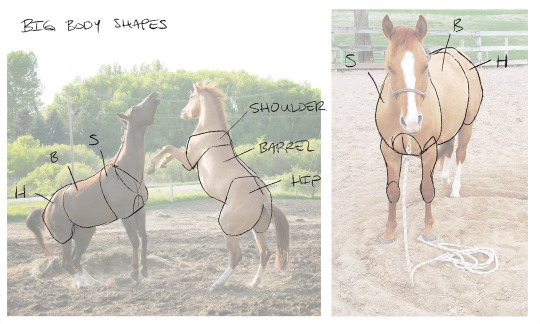
Key muscle masses
When I draw horses, I like to emphasis curves vs straights. Horses have that built in naturally as their body is often either "pure muscle" or "pure bone". There's some really nice details at the intersections of body parts, like at the front elbow and behind the ears along the neck (aka the "poll") where there's highly definable muscle groups that can help with visual clarity.

Fun fact, young horses grow hip-first. The horse in the photo above is 8 years old. That same horse at 4 years is below. Cracks me up how much taller his hip was at the time.
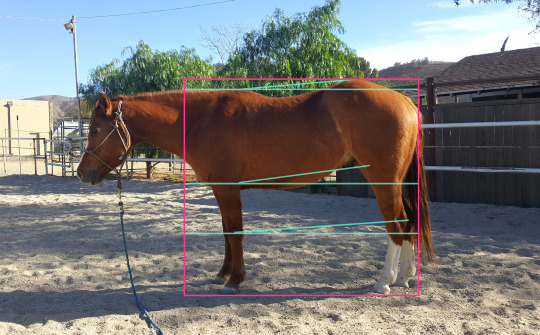
Ok so the muscles on the front legs combined with the shoulder mass is a fave combo of mine. The shoulder mass itself is something that I've found that is particularly horse-ish. For me, it's a pretty big visual signifier - almost more important than the neck. You can show a lot of tension/action in the body with the shoulder depending how you simplify it. Horses use their shoulders A LOT (too much if you ask any dressage rider or reiner), so emphasizing the shoulder can make a horse more expressive.
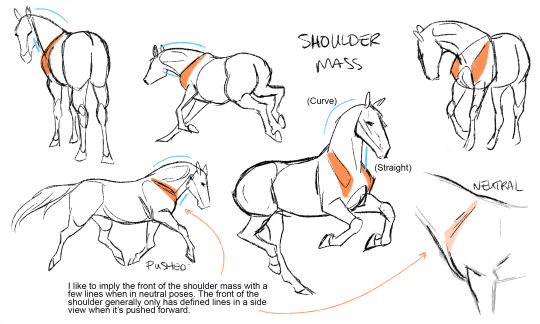
Legs. Oh heavens, the legs.
Yeah ok so again, Hultgren goes into fantastic detail on legs and hooves (I still follow how he simplifies hooves to this day my gosh that guy is a genius), but I often break them down like this for quick sketching. Are horse's legs realistically this emphasized? No, but I like the visual language; believable but expressive. This can apply to any size/shape from arabians to drafts.
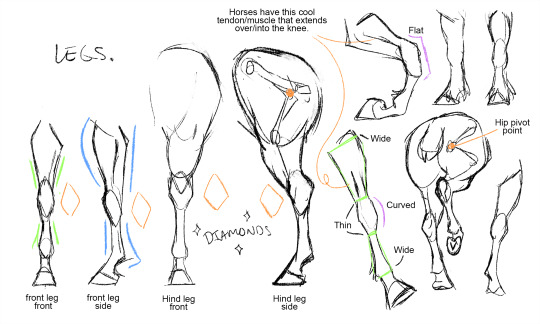
And finally...
A few head details -
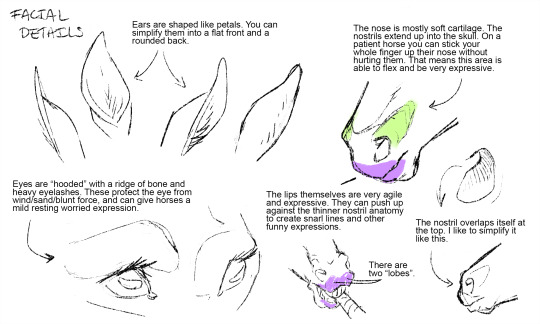
Overall horses have SO many variables. The fun part about that is that they're highly customizable and able to be endlessly stylized. The tough part is that they're hard to draw strictly because of all of the little things to keep track of to make sure the horse reads as "horse".
And so because third time's the charm, Ken Hultgren's Art of Animal Drawing really is one of the best I've seen for breaking down, simplifying, and applying horse anatomy to active drawings.
But most of all, the more you draw horses the easier they'll be.
–
Discord | Patreon | Art Prints
3K notes
·
View notes